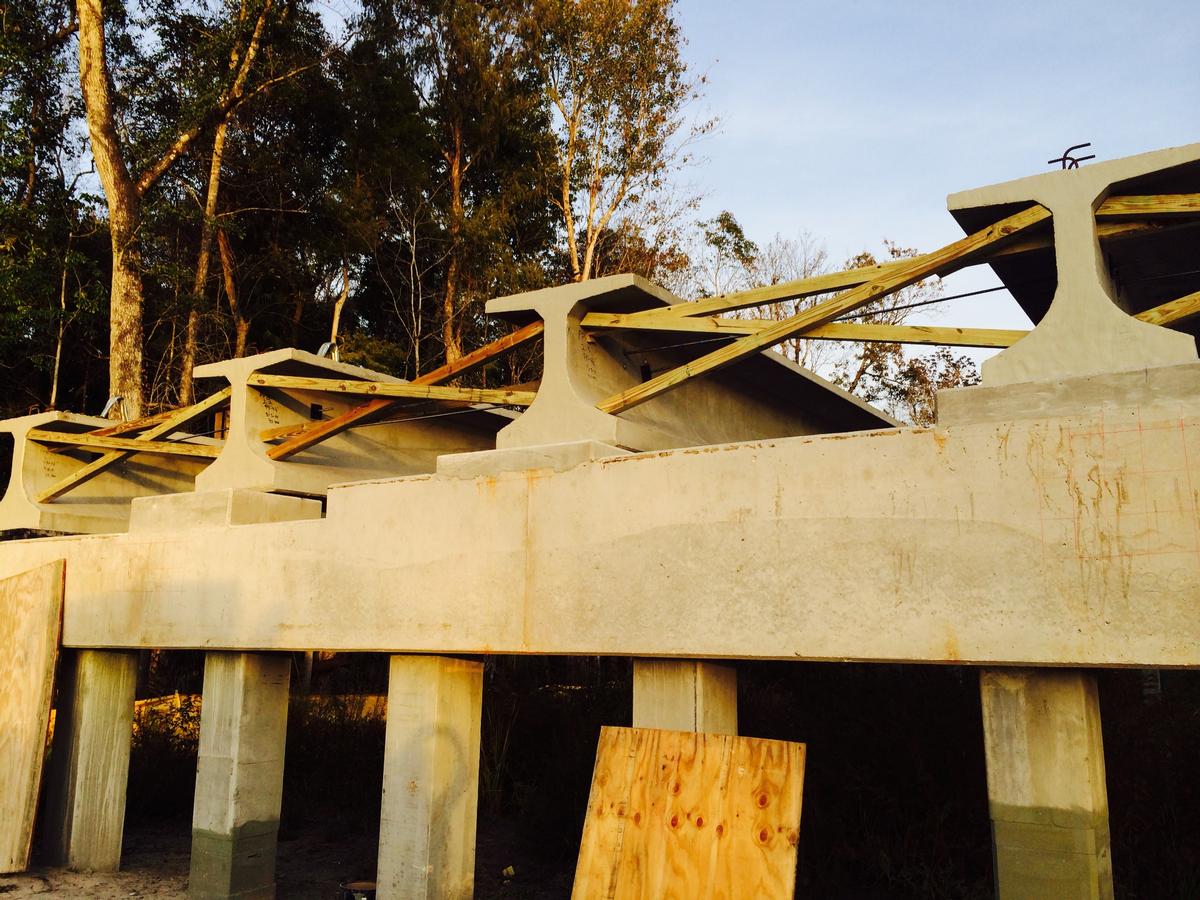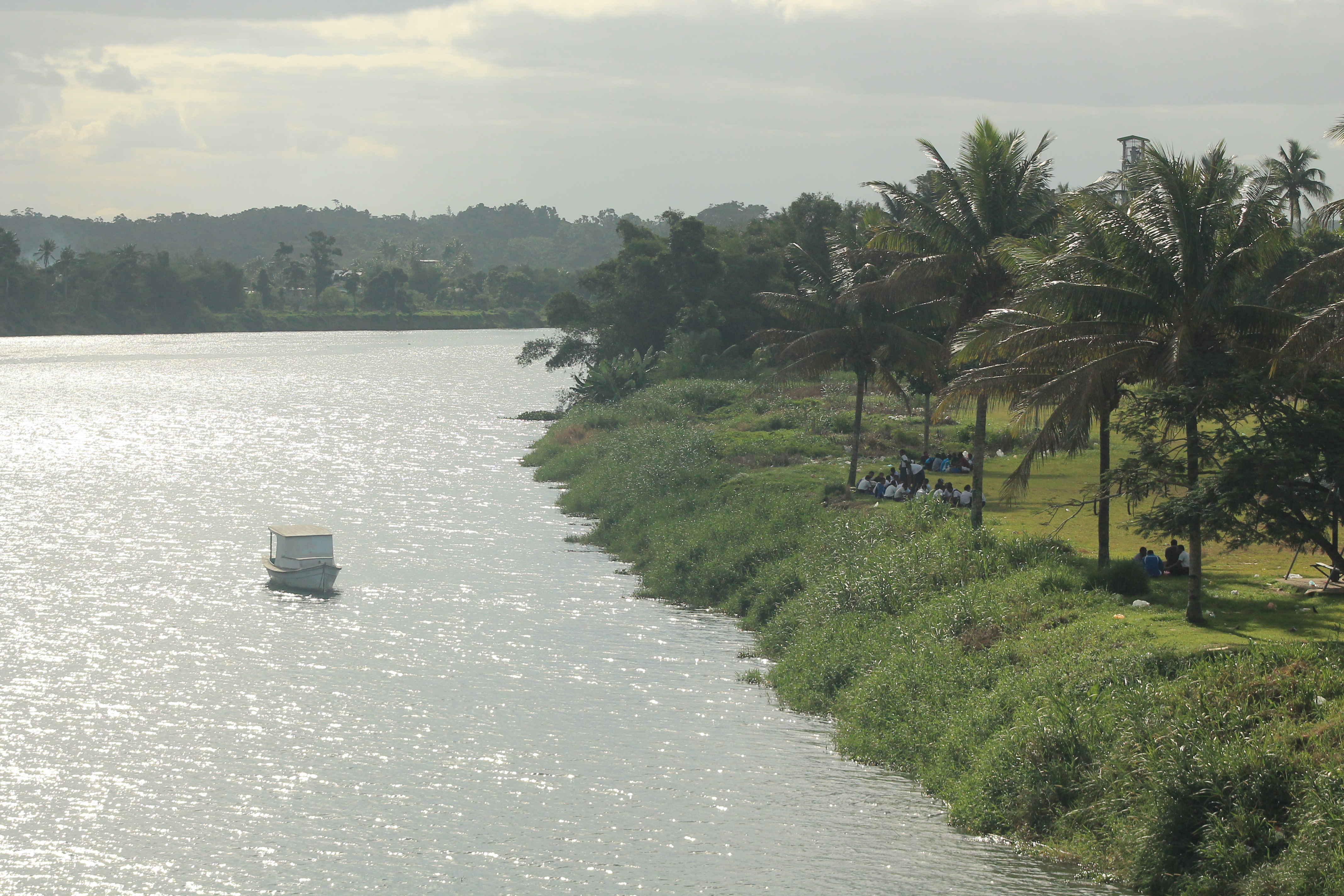|
Rewa Bridge
The Rewa Bridge is a four-lane concrete girder road bridge over the Rewa River joining Suva and Nausori in Fiji Fiji ( , ,; fj, Viti, ; Fiji Hindi: फ़िजी, ''Fijī''), officially the Republic of Fiji, is an island country in Melanesia, part of Oceania in the South Pacific Ocean. It lies about north-northeast of New Zealand. Fiji consists .... The bridge has a length of , comprising seven internal spans of 49.5 m and end spans of 39.25 m. It is the longest bridge in Fiji and the longest bridge of its type in the South Pacific. The bridge was funded by a partnership between the European Union and the government of Fiji and was constructed by Fletcher Construction for the government of Fiji between October 2003 and August 2006 for a cost of FJ$29.7 million. Old Rewa Bridge The new Rewa bridge replaces a 60-year-old structurally unsound steel bridge. As of 2011, the old Rewa bridge is still in existence. There has been a proposal put forward by the Nausori T ... [...More Info...] [...Related Items...] OR: [Wikipedia] [Google] [Baidu] |
Girder Bridge
A girder bridge is a bridge that uses girders as the means of supporting its deck. The two most common types of modern steel girder bridges are plate and box. The term "girder" is often used interchangeably with "beam" in reference to bridge design. However, some authors define beam bridges slightly differently from girder bridges. A girder may be made of concrete or steel. Many shorter bridges, especially in rural areas where they may be exposed to water overtopping and corrosion, utilize concrete box girder. The term "girder" is typically used to refer to a steel beam. In a beam or girder bridge, the beams themselves are the primary support for the deck, and are responsible for transferring the load down to the foundation. Material type, shape, and weight all affect how much weight a beam can hold. Due to the properties of the second moment of area, the height of a girder is the most significant factor to affect its load capacity. Longer spans, more traffic, or wider spacing o ... [...More Info...] [...Related Items...] OR: [Wikipedia] [Google] [Baidu] |
Rewa River
The Rewa River is the longest and widest river in Fiji. Located on the island of Viti Levu, the Rewa originates in Tomanivi, the highest peak in Fiji, and flows southeast for 145 km to Laucala Bay, near Suva Suva () is the capital and largest city of Fiji. It is the home of the country's largest metropolitan area and serves as its major port. The city is located on the southeast coast of the island of Viti Levu, in Rewa Province, Central Divi .... The Rewa River drains approximately one-third of Viti Levu.''The New Encyclopædia Britannica'' Volume 10, Micropædia, 1988, pg.11Britannica Online The Rewa River is fed by two large tributaries, the Wainibuka and the Wainimala and it is joined by several other rivers of importance before it reaches the sea by a delta of many mouths. It is navigable by small crafts up 80 kilometers from its mouth and its basin is enriched by a deep deposit of alluvial soil. The delta of the river is where several Fijian villages ... [...More Info...] [...Related Items...] OR: [Wikipedia] [Google] [Baidu] |
Suva
Suva () is the capital and largest city of Fiji. It is the home of the country's largest metropolitan area and serves as its major port. The city is located on the southeast coast of the island of Viti Levu, in Rewa Province, Central Division. In 1877, the capital of Fiji was moved to Suva from Levuka, the main European colonial settlement at the time, due to its restrictive geography and environs. The administration of the colony was transferred from Levuka to Suva in 1882. As of the 2017 census, the city of Suva had a population of 93,970, and Suva's metropolitan area, which includes its independent suburbs, had a population of 185,913. The combined urban population of Suva and the towns of Lami, Nasinu, and Nausori that border it was around 330,000: over a third of the nation's population. (This urban complex, excluding Lami, is also known as the Suva-Nausori corridor.) Suva is the political, economic, and cultural centre of Fiji. It is also the economic and cul ... [...More Info...] [...Related Items...] OR: [Wikipedia] [Google] [Baidu] |
Nausori
Nausori () is a town in Fiji. It had a population of 57,866 at the 2017 census. This makes it the fourth most populous municipality in the country. Situated 19 kilometers outside of Suva, it forms one pole of the burgeoning Suva-Nausori corridor. Nausori is home to three provinces Rewa, Tailevu and Naitasiri. The Rewa Bridge across the Rewa River, built by Fletcher Construction and opened in 2006, links Nausori to the capital, Suva. Economy There are two major business areas in Nausori - the town of Nausori proper, and Nakasi. A new market and bus terminal were opened in 2015, allowing for the town's future development. A major upgrade of the local airport, including a new terminal and a longer runway, was expected to get started in the first quarter of 2017. History The old town of Nausori was situated around 5 km north of the current one, heading towards Kasavu. The ruins of the old town, situated in Naduruloulou, are still there. Now, it is a tourist cent ... [...More Info...] [...Related Items...] OR: [Wikipedia] [Google] [Baidu] |
Fiji
Fiji ( , ,; fj, Viti, ; Fiji Hindi: फ़िजी, ''Fijī''), officially the Republic of Fiji, is an island country in Melanesia, part of Oceania in the South Pacific Ocean. It lies about north-northeast of New Zealand. Fiji consists of an archipelago of more than 330 islands—of which about 110 are permanently inhabited—and more than 500 islets, amounting to a total land area of about . The most outlying island group is Ono-i-Lau. About 87% of the total population of live on the two major islands, Viti Levu and Vanua Levu. About three-quarters of Fijians live on Viti Levu's coasts: either in the capital city of Suva; or in smaller urban centres such as Nadi—where tourism is the major local industry; or in Lautoka, where the sugar-cane industry is dominant. The interior of Viti Levu is sparsely inhabited because of its terrain. The majority of Fiji's islands were formed by volcanic activity starting around 150 million years ago. Some geothermal activity st ... [...More Info...] [...Related Items...] OR: [Wikipedia] [Google] [Baidu] |
European Union
The European Union (EU) is a supranational political and economic union of member states that are located primarily in Europe. The union has a total area of and an estimated total population of about 447million. The EU has often been described as a ''sui generis'' political entity (without precedent or comparison) combining the characteristics of both a federation and a confederation. Containing 5.8per cent of the world population in 2020, the EU generated a nominal gross domestic product (GDP) of around trillion in 2021, constituting approximately 18per cent of global nominal GDP. Additionally, all EU states but Bulgaria have a very high Human Development Index according to the United Nations Development Programme. Its cornerstone, the Customs Union, paved the way to establishing an internal single market based on standardised legal framework and legislation that applies in all member states in those matters, and only those matters, where the states have agree ... [...More Info...] [...Related Items...] OR: [Wikipedia] [Google] [Baidu] |
Fletcher Construction
The Fletcher Construction Company Limited is a New Zealand construction company and a subsidiary of Fletcher Building. Together with Higgins Contractors Ltd it makes up the Construction division of Fletcher Building. Fletcher Construction is widely known in New Zealand, and has delivered various iconic projects including constructing the Auckland Sky Tower. It has five main business units: *Infrastructure *Buildings *South Pacific *Higgins *Brian Perry Civil History In 1909 James Fletcher senior, a builder and stonemason from Scotland, began a building business along with Englishman Albert Morris. The firm was known as Fletcher and Morris and received their first commission on 1 June 1909. This was for a double bay wooden villa at Broad Bay on the Otago Peninsula and was built for £375 (New Zealand still used British pounds at that time). The house was occupied on 10 November 1909 by local merchant Hubert Green following his marriage to Agnes Galloway. However, they made n ... [...More Info...] [...Related Items...] OR: [Wikipedia] [Google] [Baidu] |
Fijian Dollar
The Fijian dollar (currency sign: FJ$, $; currency code: FJD) has been the currency of Fiji since 1969 and was also the currency between 1867 and 1873. It is normally abbreviated with the dollar sign $, or alternatively FJ$ to distinguish it from other dollar-denominated currencies. It is divided into 100 cents. History Decimalisation origins Fiji followed the pattern of South Africa, Australia, and New Zealand in that when it adopted the decimal system, it decided to use the half pound unit as opposed to the pound unit of account. The choice of the name dollar was motivated by the fact that the reduced value of the new unit corresponded more closely to the value of the US dollar than it did to the pound sterling. Second dollar (1969–present) The dollar was reintroduced on 15 January 1969, replacing the Fijian pound at a rate of 1 pound = 2 dollars, or 10 shillings = FJ$1. Despite Fiji having been a republic since 1987, coins and banknotes continued to feature Queen Eliza ... [...More Info...] [...Related Items...] OR: [Wikipedia] [Google] [Baidu] |
Bridges Completed In 2006
A bridge is a structure built to span a physical obstacle (such as a body of water, valley, road, or rail) without blocking the way underneath. It is constructed for the purpose of providing passage over the obstacle, which is usually something that is otherwise difficult or impossible to cross. There are many different designs of bridges, each serving a particular purpose and applicable to different situations. Designs of bridges vary depending on factors such as the function of the bridge, the nature of the terrain where the bridge is constructed and anchored, and the material used to make it, and the funds available to build it. The earliest bridges were likely made with fallen trees and stepping stones. The Neolithic people built boardwalk bridges across marshland. The Arkadiko Bridge (dating from the 13th century BC, in the Peloponnese) is one of the oldest arch bridges still in existence and use. Etymology The ''Oxford English Dictionary'' traces the origin of the wo ... [...More Info...] [...Related Items...] OR: [Wikipedia] [Google] [Baidu] |






-10_Dollars_(1872).jpg)